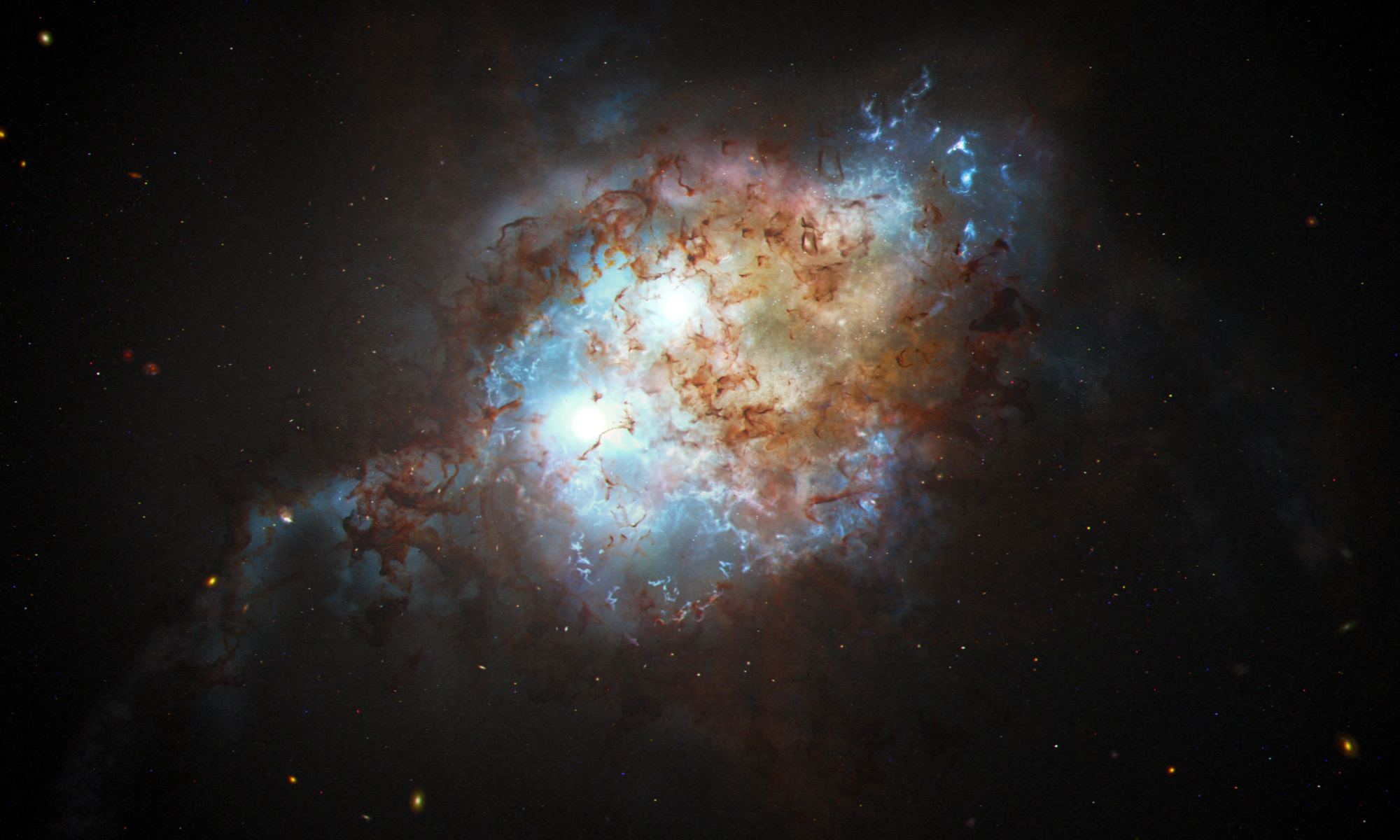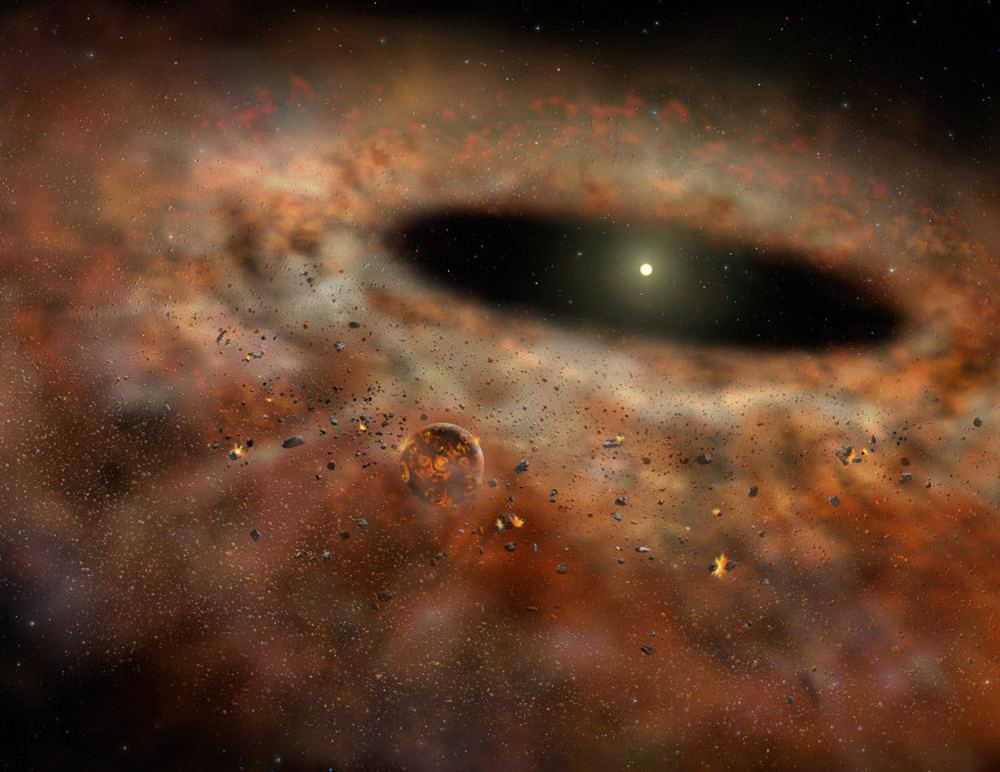When it comes to the brightest, most powerful objects in the Universe, not much can beat a Quasar. A Gamma Ray Burst from a supernova might be more energetic, but doesn’t last very long. Quasars, by comparison, can churn out 1000 times the radiation of the Milky Way, and keep doing it for hundreds of millions of years.
They get all this energy from the supermassive black holes that live at the center of galaxies. As material falls towards the black hole, an accretion disk forms around it: a swirling cloud of energetic material which heats up through friction and releases electromagnetic radiation. The resulting Quasar can be so bright it drowns out the light from the rest of its galaxy from our perspective.
On April 5th, researchers announced the discovery of a rare double quasar in the early Universe. The two quasars are gravitationally bound, spiraling in towards each other. Their host galaxies are in the process of merging, and the supermassive black holes generating the quasars will also eventually collide and merge.
Continue reading “Hubble Sees Two Quasars Side by Side in the Early Universe”

